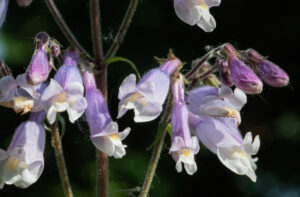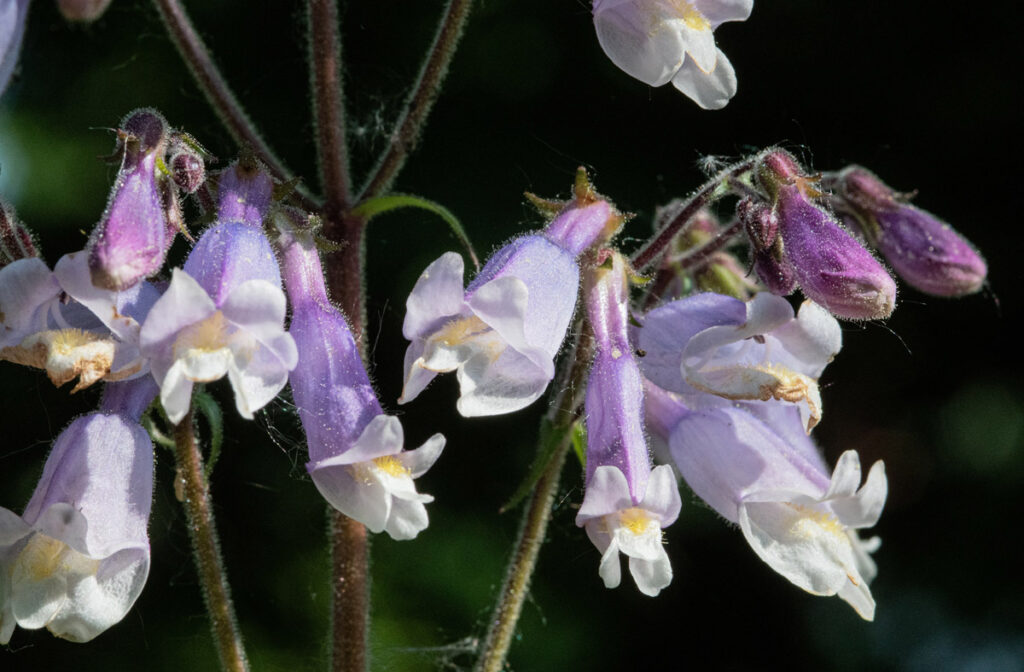Gardening for climate resilience
Drought-tolerant species that do not need watering are key, says landscaping specialist

This summer, the Rideau River watershed has suffered from significant heat and lack of rain. While Manor Park’s water supply from the Ottawa River hasn’t been affected, we’ve been asked to suspend non-essential water use, including the watering of lawns and non-food gardens.
As extreme conditions become more frequent, we must redesign our home landscapes to be more resilient against drought, heat, and intense rainfall.
Drought-tolerant plants
Key to this are drought-tolerant species that do not need watering once established. The extensive, fibrous root systems of little bluestem grass and Pennsylvania sedge and the deep taproots of purple coneflower and blue wild indigo maximize their access to water in the soil.
The fine hairs on pearly everlasting and field pussytoes reflect light to reduce water loss and create a beautiful silver-blue sheen. The protective waxy coatings on the leaves of the unique rattlesnake master have a glaucous hue. The bulbs of nodding onion and corms of blazing star store water and nutrients for times of drought.

Some of these species occur naturally in the Ottawa region in upland forests or in alvars, unique rocky ecosystems. Others we can borrow from the prairies, tall grasslands, and oak savannas of southern Ontario and the wider Great Lakes region where the plants have already adapted to dry conditions.
Drought-tolerant soil
However, drought-tolerant plants are only one aspect of creating a climate resilient garden. The other is building drought-tolerant soil. The soil in urban yards, especially in garden beds converted from lawn or near recent construction, is usually dry, compacted, extremely low in organic matter, and sometimes almost impermeable. It can neither retain moisture nor properly absorb intense rainfall.
Prairie, meadow, and woodland soils are healthy from years of decomposing plant matter. The decomposition process creates humus, porous soil textures, and an abundance of bacterial and fungal life. The final result is healthy soil that is permeable yet retains some moisture, crucial for managing both heavy rain and drought.
The solution for our urban soils is to add organic matter, and in Manor Park, we don’t need to look very far to find some.
Leaf mould gold
The leaves of our neighbourhood’s mature deciduous trees are a gardener’s gold. When you leave the leaves in your garden beds, moisture is retained. The fungal life slowly breaks the leaves down, releasing appropriately small amounts of nutrients over time and creating healthy, permeable soil. This mimics the natural processes of our forests.
You can also gather leaves to create a concentrated soil amendment called leaf mould. Promptly rake them up from your lawn, driveway, or walkway before any wildlife takes shelter, put them in a pile or within a simple chicken wire bin in a hidden corner of your yard, and wait for them to decompose into a fine humus.
This is not the hot, smelly bacteria-driven process of composting kitchen scraps. When a pile is only leaves, naturally occurring fungi take their time in a cold decomposition process that will not attract pests.
Great leaf mold is like a fine wine. When it’s ready, you’ll know. It’s dark, crumbly, and earthy. While the process can take two to three years, this can be greatly sped up by keeping the leaves wet and shredding them right after raking.
Putting leaf mould to work
Rich fertilizers and manure-based composts create overly fertile gardens with excessive growth, floppy plants, and fast-growing weeds. Leaves improve soil health without these excess nutrients.
Top-dress your beds with leaf mould followed by mulch, or incorporate it into a planting hole, mixing with the native soil. Use larger amounts for woodland species, but take care to use only very small amounts for dry prairie or meadow species. For alvar species, consider mixing leaf mould with crushed stone.
Manor Park’s beautiful deciduous trees are a treasure, and their leaves are a critical resource to help us face climate change. The soil desperately needs our local leaves to be kept here, and this is the time of year to start.
*Exception: Do not leave the leaves with Norway maple leaves. Unlike native maples, invasive Norway leaves create thick mats that suppress plant growth. Use them only for leaf mould. Check the GeoOttawa map to see if your city tree is a Norway.
Christina Keys is the owner of Cardinal Glen Ecological Landscaping, specializing in the design and installation of native plant gardens. She is a volunteer with the MPCA Environmental Sustainability Committee and the Butterflyway Ranger for Manor Park and Cardinal Glen.


